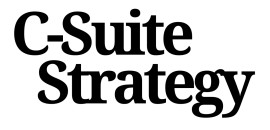
Understanding the Role of a Compliance Auditor
What is a Compliance Auditor and Why Their Role Matters
Within a business framework, a compliance auditor plays a pivotal role in ensuring the adherence to external and internal standards, laws, and regulations. The audit process is critical in evaluating an organization's conformity with regulatory requirements and internal controls. This professional, often seen as a regulatory compliance gatekeeper, supports both security and risk management initiatives. Defining the Role The compliance auditor's job is multifaceted and involves performing compliance audits to evaluate and improve the effectiveness of an organization's processes. They scrutinize various facets of business operations, from financial regulations to more specific areas like healthcare or PCI DSS standards. Responsibilities and Focus Areas Compliance auditors conduct risk assessments and develop audit plans that coincide with an organization's strategic objectives. Their work helps in safeguarding the business against potential breaches of laws regulations and internal policies. This essential role focuses on:- Evaluating the efficiency and adequacy of controls in place.
- Reviewing compliance with applicable laws, regulations, and standards.
- Identifying areas of risk and recommending measures to mitigate those risks.
- Communicating findings to the compliance officer, managers, and other stakeholders.
Integrating Compliance Auditing into Strategic Planning
Aligning Compliance Auditing with Strategic Business Goals
Integrating compliance auditing into the strategic planning process of an organization is no longer just a regulatory necessity; it's a move towards proactive risk management that could set your business apart. Compliance auditors ensure that all business elements align with internal and external regulations, enhancing strategic oversight and maintaining organizational integrity. A methodical approach to integrate compliance audits starts with recognizing auditing as not only a financial safeguard but also a strategic tool. The compliance auditor's job extends beyond checking boxes for regulatory compliance; they provide critical insights into potential risks your organization might face. This proactive facet of compliance audits aids in foreseeing potential obstacles, such as regulatory changes, that could impact strategic implementation. In the United States, incorporating compliance auditing into business processes can streamline regulatory compliance and bolster security measures. By aligning the roles of compliance officers and auditors with your overall organizational strategy, you encourage a culture of transparency and accountability. This integration will not only aid in aligning with ISO standards but also reinforce your business's financial well-being. Such alignment enhances the efficacy of risk management strategies throughout the organization. Compliance auditors work with management to establish solid internal controls, ensuring that every part of the business, from healthcare compliance to PCI DSS requirements, adheres to existing laws and regulations. While auditors identify lapses in controls and suggest necessary corrective actions, it is crucial to leverage their insights in broader strategic conversations. Strategically integrating these insights can result in a more resilient organization, as compliance auditors offer a unique perspective that facilitates the anticipation of future compliance challenges and fortifies strategic decision-making. For further insights on mastering risk management, a strategic approach for your business engages deeply with these aspects, offering practical steps for c-suite leaders here.Benefits of a Compliance Auditor for the C-suite
Empowering the C-suite with Enhanced Strategic Oversight
The inclusion of a compliance auditor in your strategic planning team can significantly boost the efficacy of your organization’s oversight capabilities. For C-suite executives, understanding the unique advantages compliance auditors bring is crucial to navigating the complexities of the modern business landscape. The compliance auditor's job encompasses a comprehensive understanding of internal controls and regulatory compliance, making them indispensable in identifying and mitigating potential risks. Their expertise not only ensures adherence to laws and industry regulations but also fortifies your organization's financial security by conducting meticulous compliance audits. When integrated into the leadership structure, compliance auditors can transform the way C-suite members perceive risk and security. They offer insights into the effectiveness of internal processes, shedding light on areas prone to non-compliance and paving the way for informed decision-making. By facilitating a deeper understanding of internal audit processes and regulatory landscapes such as PCI DSS and healthcare compliance, these professionals expand the C-suite’s capacity to maneuver through rapidly evolving environments. This understanding empowers leaders to formulate strategies that proactively address compliance challenges, thus minimizing disruptions and safeguarding the organization’s reputation. Furthermore, the alignment of compliance auditor initiatives with strategic objectives ensures a more cohesive approach to risk management and regulatory compliance. Understanding key elements in strategic cost management can be beneficial in achieving this alignment. The presence of compliance auditors also provides reassurance to stakeholders and investors, signaling a commitment to responsible governance and long-term stability.Challenges in Compliance Auditing
Addressing the Hurdles in Compliance Auditing
Every organization faces its own unique set of challenges when it comes to compliance auditing. In today’s dynamic regulatory environment, staying on top of compliance requirements is no small feat. Organizations must navigate a complex maze of laws, regulations, and controls that vary across industries and jurisdictions. For instance, compliance with standards such as ISO certifications, PCI DSS, and healthcare compliance rules each presents distinct demands on businesses.
One significant challenge is the evolving landscape of regulatory compliance. As regulatory bodies update existing laws or introduce new ones, businesses must constantly adjust their compliance strategies and processes. This requires organizations to stay informed about regulatory changes and ensure their internal controls remain robust and effective.
An additional challenge lies in balancing internal and external audits. While internal audits help identify risks and irregularities within the organization, external audits provide a third-party perspective that can offer invaluable insights. However, coordinating these audits to work in harmony without overwhelming the organization's resources and personnel remains a complex task.
Resource allocation is another area that often stymies organizations. Many businesses, especially smaller ones, struggle with dedicating adequate resources to build and maintain a comprehensive compliance program. This may involve hiring compliance officers or ensuring access to specialized compliance auditors who possess the expertise needed to navigate intricate regulations effectively.
Furthermore, the integration of compliance audits into the overall business strategy can pose challenges. It requires aligning the audits with the organization’s strategic objectives, ensuring they contribute to broader goals such as risk management and financial security.
Ultimately, the key to overcoming these challenges is a proactive approach to compliance auditing. By staying informed and employing strategic planning, organizations can not only meet compliance requirements but use them as a catalyst for growth and risk mitigation.
Leveraging Technology in Compliance Auditing
Embracing Modern Tools for Compliance
The evolving landscape of compliance auditing demands a keen eye not only for detail but also for technological advancements. Organizations grappling with heightened security threats and complex regulations can benefit significantly from integrating technology into their audits. As the landscape continues to evolve with regulations like ISO, PCI DSS, and healthcare compliance standards, leveraging digital solutions becomes paramount.
Compliance auditors, tasked with safeguarding internal processes and evaluating regulatory standards, have found an ally in technology. Tools such as automated audit processes, AI-driven analytics, and blockchain for enhanced transparency have redefined the auditor job description. These technologies enhance the precision and efficiency of audits, allowing auditors in the United States and beyond to manage vast datasets with ease.
The synergy between technology and compliance can address traditional challenges faced by the C-suite, as highlighted earlier. It reduces human error, minimizes the time required for audits, and amplifies the role of the compliance officer by providing deeper insights. For instance, data analytics can aid in identifying patterns and trends—opportunities that manual audits might overlook.
Moreover, the integration of advanced security compliance tools foster a robust risk management framework. This framework can be pivotal for internal auditors focused on maintaining high standards of regulatory compliance. It's not just about keeping up with laws and regulations; it's about preempting risks and embodying a culture of compliance throughout the organization.
Overall, prioritizing technology in the compliance audit will not only enhance the efficiency of the audit process but also empower the compliance manager to act proactively. Organizations that embrace these technological advancements in their audit paradigm are better poised to face the complexities of today and tomorrow.














